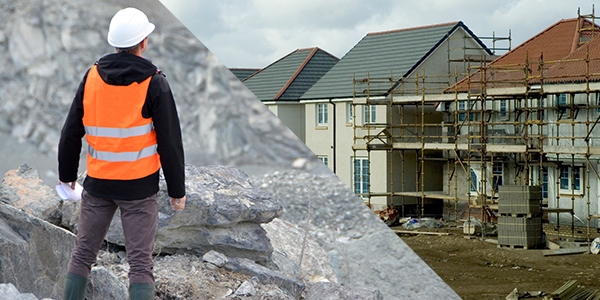Doing Well by Doing Good: Investing in the Hurricane Harvey Recovery

|
|
The floodwaters are starting to recede in Texas and Louisiana, and the remnants of Hurricane Harvey are finally clearing out of the Gulf region. Now, the long recovery process can get underway.
But make no mistake: That process will be incredibly expensive, and take a very long time. Estimates are all over the map because it’s still early. But get a load of the kinds of figures being thrown around out there …
* Goldman Sachs Group (GS, Rated “C+”) estimated this week that Harvey caused a whopping $30 billion in property damage in Texas alone. If that pans out, it would make it the ninth-worst storm in the U.S. since World War II.
* A separate estimate from JPMorgan Chase (JPM, Rated “B+”) estimated that insured losses could run as high as $20 billion.
* Still another earlier estimate from research firm CoreLogic suggest it could cost almost $40 billion to rebuild, including expenses for everything from materials to labor.
Where will that money come from? In the case of commercial losses for things like business interruption and property damage, it’ll be private insurance policies. In the case of homeowner losses, as my colleague Gavin Magor wrote yesterday, it’ll be a mix of private insurance (for wind-related damage) and the federally backed National Flood Insurance Program (for flood-related expenses).
Unfortunately, early reporting suggests many homes in the hurricane strike zone didn’t have flood coverage. The New York Times said that only about 15% of the homes in Harris County where Houston is located have flood coverage. That means no-or-low-interest loans provided through various government programs … a massive infusion of taxpayer money … charity/donations … and personal “rainy day” funds will have to foot the bill.
Regardless of where the money comes from, rest assured that it will come. That means a massive rebuilding and recovery effort will soon get underway, one that opens up an opportunity for investors. They can do well for themselves, while doing good for others, by investing in the infrastructure, construction, and industrial companies that will contribute to the rebuilding efforts.
At Weiss Ratings, we’ve written about many of the mutual funds, ETFs, and stocks that specialize in those kinds of companies over the past year. That’s because we (and others) expected that President Trump would push through a large infrastructure spending package. But while that hasn’t happened yet, the Harvey-led recovery process should give all of these companies a big shot in the arm.
They should also benefit from improving U.S. economic growth. The government just boosted its estimate of second-quarter GDP to 3% from 2.6%, while the Atlanta Fed’s “GDP Now” model estimates that growth is accelerating even further in the current quarter — to as much as 3.4%.
So check out our November 2016 column on infrastructure-focused mutual funds … my January 2017 piece on construction and engineering stocks … and my May 2017 article on industrial and infrastructure ETFs for more background information. They also include Weiss Ratings Screeners of leading ETFs and stocks specializing in those sectors.
Out of 24 ETFs listed in the Top Industrial & Infrastructure ETF Screener, for instance, every single one is showing positive 1-year total returns. Seventeen of those ETFs were beating the SPDR S&P 500 ETF (SPY, Rated “B”).
The performance is more mixed among the individual stocks listed. But the highest-rated stocks on that list, including companies like TopBuild (BLD, Rated “B-”) and Exponent (EXPO, Rated “B”), are killing it. They were recently up 64.9% and 31.2% in the past year. Shares of the laggards also started to move higher this week in anticipation of rebuilding money pouring into Harvey-struck areas. That move could soon shift into high gear.
Bottom line: If you’re looking to profit from the massive, sorely needed recovery and revitalization process, the ETFs, mutual funds, and stocks we rate highly are a great place to start. We’re a resilient country, and I have every reason to believe the influx of money, labor, and materials to help the Gulf region rebuild will be massive.
Until next time,
Mike
P.S. If you would also like to donate to the Harvey relief efforts, there are many ways you can do so. This ABC News story gives you several options, and this New York Times story lists several others.
ETF Spotlight Edition, by Mike Larson, Senior Analyst Mike Larson is a Senior Analyst for Weiss Ratings. A graduate of Boston University, Mike Larson formerly worked at Bankrate.com and Bloomberg News, and is regularly featured on CNBC, CNN, Fox Business News and Bloomberg Television as well as many national radio programs. Due to the astonishing accuracy of his forecasts and warnings, Mike Larson is often quoted by the Washington Post, Chicago Tribune, As-sociated Press, Reuters, CNNMoney and many others. |



